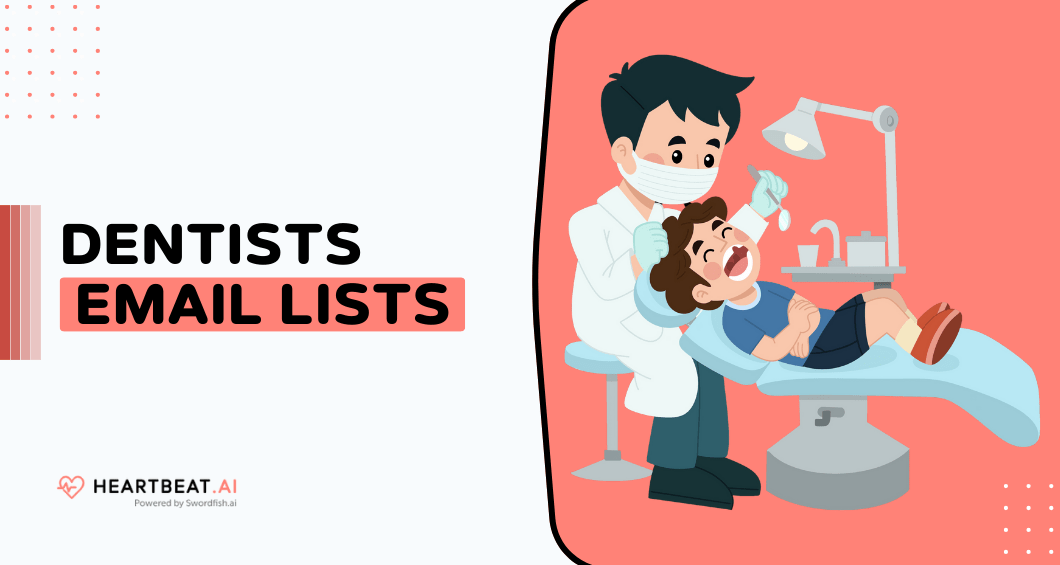Building and optimizing a dentist email list is crucial for any dental practice aiming to enhance patient communication, increase appointment bookings, and improve overall patient satisfaction. This guide will walk you through the steps to create and optimize your dentist email list effectively.
Why an Email List is Essential for Dentists
Before diving into the creation and optimization process, it’s important to understand why having an email list is essential for dentists. Email marketing allows for direct communication with patients, enabling you to provide personalized care reminders, promote special offers, and share valuable dental health tips. A well-maintained email list can lead to increased patient loyalty and higher retention rates.
Step 1: Building Your Dentist Email List
1.1 Collect Email Addresses from Existing Patients
The first step in building your email list is to collect email addresses from your existing patients. During appointments, ask patients if they would like to receive updates and reminders via email. Ensure you explain the benefits, such as appointment reminders, dental health tips, and special promotions.
1.2 Offer Incentives for Email Sign-Ups
Incentives can be a powerful motivator for patients to join your email list. Offer discounts on dental services, free dental check-ups, or entry into a raffle for a dental care package. Make sure these incentives are prominently displayed in your office, on your website, and on your social media platforms.
1.3 Use Online Forms on Your Website
Incorporate user-friendly sign-up forms on your website. Ensure these forms are easy to find and fill out. Consider placing them on your homepage, blog pages, and contact pages. A simple form asking for a name and email address can significantly boost your subscription rate.
1.4 Leverage Social Media
Promote your email list on social media platforms such as Facebook, Instagram, and Twitter. Share posts highlighting the benefits of joining your email list and link to your sign-up form. Engage with your followers by responding to comments and messages to build trust and encourage sign-ups.
1.5 Partner with Local Businesses
Collaborate with local businesses, such as health clubs, pharmacies, and wellness centers, to promote your email list. These partnerships can help you reach a wider audience and attract new patients to your practice.
Step 2: Optimizing Your Dentist Email List
2.1 Segment Your Email List
Segmenting your email list involves dividing your subscribers into different groups based on specific criteria, such as age, dental history, and appointment frequency. This allows you to tailor your messages to each group, making your emails more relevant and engaging. For example, you can send pediatric dental tips to parents and cosmetic dentistry offers to adults interested in improving their smile.
2.2 Personalize Your Emails
Personalization goes beyond using the recipient’s name in the email. Use the data you have collected to send personalized content that resonates with your patients. For instance, send appointment reminders with specific details about their upcoming visit, or recommend dental products based on their purchase history.
2.3 Create Compelling Content
Your email content should be informative, engaging, and relevant to your audience. Include a mix of dental health tips, practice updates, patient testimonials, and promotional offers. High-quality images and videos can enhance your emails and make them more visually appealing. Remember to keep your emails concise and to the point, as long emails may deter readers.
2.4 Optimize for Mobile Devices
A significant portion of email opens occurs on mobile devices, so it’s crucial to ensure your emails are mobile-friendly. Use a responsive email design that adjusts to different screen sizes, and keep your subject lines short and compelling. Test your emails on various devices to ensure they look good and function properly on smartphones and tablets.
2.5 Monitor and Analyze Email Performance
Regularly monitor the performance of your email campaigns to identify areas for improvement. Key metrics to track include open rates, click-through rates, conversion rates, and unsubscribe rates. Use this data to refine your email content, subject lines, and send times. A/B testing different elements of your emails can also provide valuable insights into what resonates best with your audience.
Step 3: Ensuring Compliance with Email Regulations
3.1 Obtain Explicit Consent
Ensure that you have explicit consent from your patients before adding them to your email list. This can be achieved by using double opt-in forms, where patients confirm their subscription via a follow-up email. This not only ensures compliance with regulations but also improves the quality of your email list.
3.2 Provide an Easy Unsubscribe Option
Make it easy for patients to unsubscribe from your emails if they choose to do so. Include a clear and visible unsubscribe link in every email you send. Respecting your subscribers’ preferences builds trust and maintains a positive reputation for your practice.
3.3 Comply with Data Protection Laws
Familiarize yourself with data protection laws, such as the General Data Protection Regulation (GDPR) and the CAN-SPAM Act, to ensure your email marketing practices are compliant. These regulations require you to handle personal data responsibly and provide transparency about how you use and store this information.
Conclusion
Creating and optimizing your dentist email list is a powerful strategy to enhance patient communication, increase engagement, and grow your practice. By collecting email addresses through various channels, segmenting your list, personalizing your emails, and ensuring compliance with regulations, you can build a high-quality email list that delivers value to your patients and boosts your practice’s success. Start implementing these strategies today to see the benefits of an optimized dentist email list.





